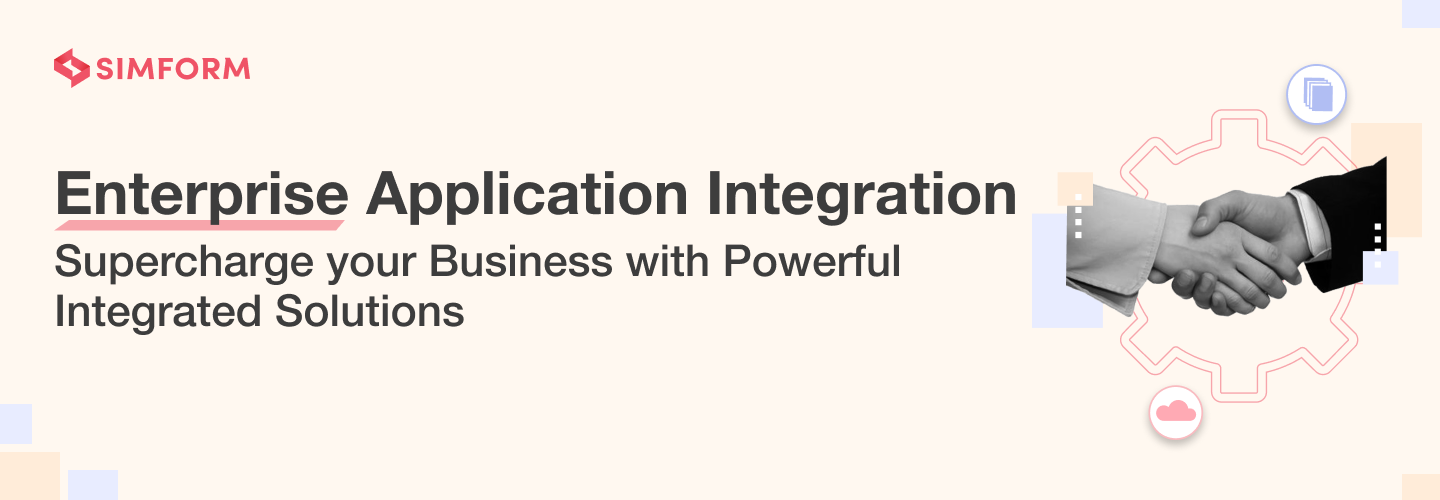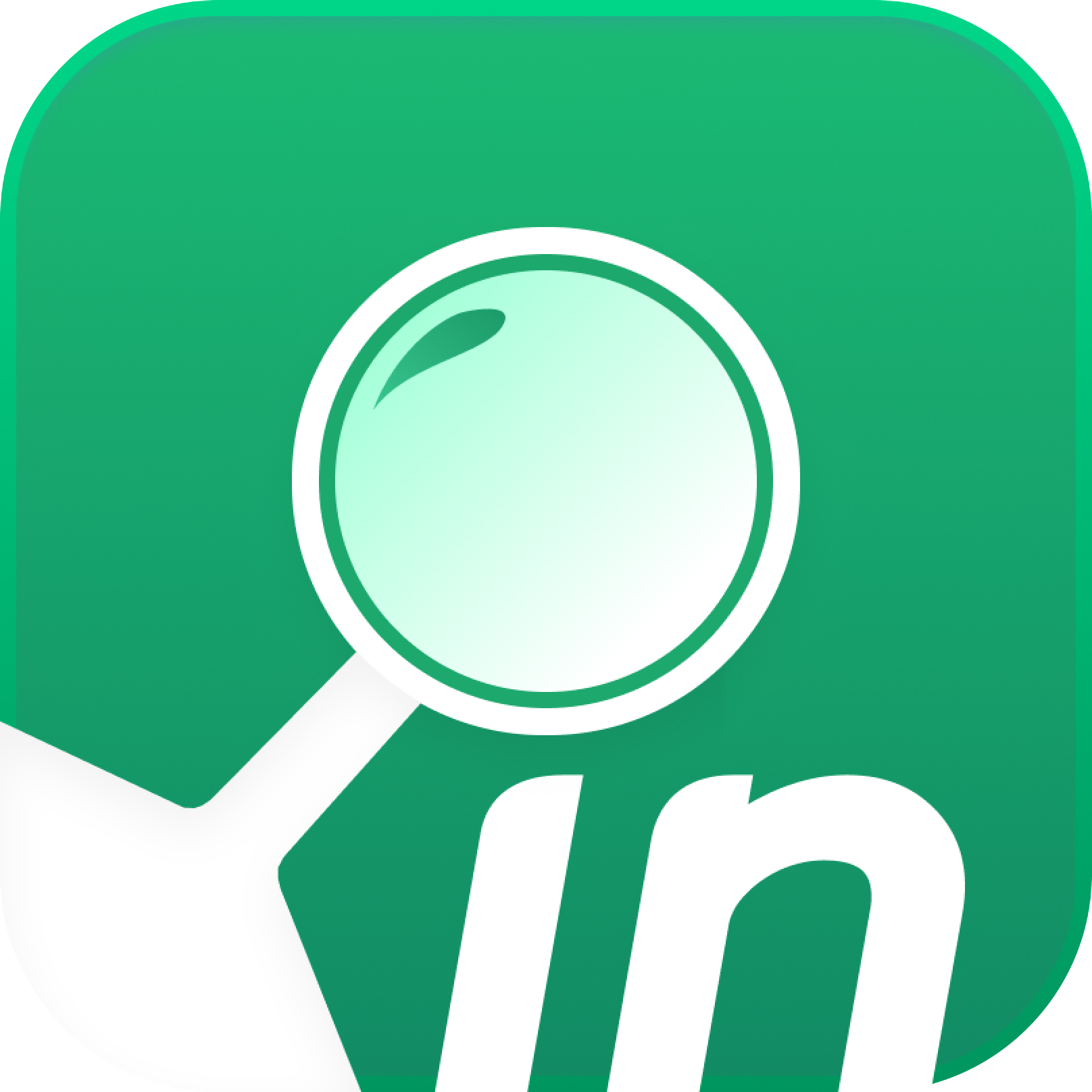Enterprise Application Integration – Connecting Businesses Digitally
Enterprise application integration has become a norm now. Learn more about what EAI is, its benefits, challenges, and various models to choose from.


Tejas Kaneriya
February 10, 2023
8 mins read
Last Updated May 10, 2023

Connecting different programs inside a business requires enterprise application integration, or EAI. This thorough tutorial examines the value of EAI for businesses, going over its definition, benefits, challenges, and more.
In June 2020, DHL Supply Chain, a leader in global contract logistics, recognized the necessity to streamline the process of incorporating new automation devices into their warehouse management solutions.
In response, they introduced a "plug and play" robotics platform, enabling clients to implement new robotic solutions in warehouses according to their requirements. The initial deployment of this solution at a company site in Madrid yielded a remarkable 60% reduction in costs, while seamlessly integrating different systems and facilitating data sharing.
The integration of applications throughout the organization offers substantial advantages, including cost reductions and enhanced operational efficiency. If your business relies on multiple systems for various activities, enterprise application integration stands out as the most effective method for optimizing operations.
In this blog post, we delve into the intricacies of enterprise application integration, exploring its definition, benefits, challenges, models, and tools. Let's delve into the details!
Top-notch corporate application development services from Simform are available, and they're made to improve your integration activities by providing customized solutions that precisely match your needs. To begin the development of top-notch products, schedule a free 30-minute consultation with our experts.
What is enterprise application integration?
The term "enterprise application integration," or "EAI," describes the ongoing process of putting tools and technology in place that make it easier for all business apps inside of a company to share data and workflows.

Benefits of enterprise application integration
Enterprise Application Integration (EAI) facilitates the seamless flow of data among different applications within an enterprise, enabling informed decision-making. Integration enables enterprises to: - Identify valuable data, applications, and services - Access application functions via APIs (Application Programming Interfaces) - Monitor application life cycles - Combine multiple enterprise services Overall, EAI ensures that changes in data are accurately reflected across all applications and can be consistently utilized. Benefits of enterprise application integration include: 1. Database Integration: EAI aims to integrate databases, removing data duplication and reducing potential errors through synchronization tools and data warehouse designs. This results in access to more comprehensive, accurate, and consistent data for enhanced business intelligence. 2. Workflow Integration: EAI facilitates efficient workflow integration across the organization. Teams can complete related tasks by integrating various tools into a single workflow. This increases productivity and ensures data consistency across different programs. 3. Interface Integration: EAI also enables interface integration across all connected applications. This means that regardless of where users access the applications from, the components of all applications present the same user interface and user experience. In summary, enterprise application integration streamlines data flow, enhances business intelligence, improves workflow efficiency, and ensures consistent user experiences across applications.
Challenges of enterprise application integration
Enterprise Application Integration (EAI) facilitates the seamless flow of data among different applications within an enterprise, enabling informed decision-making. Integration enables enterprises to:
- Identify valuable data, applications, and services
- Access application functions via APIs (Application Programming Interfaces)
- Monitor application life cycles
- Combine multiple enterprise services
Overall, EAI ensures that changes in data are accurately reflected across all applications and can be consistently utilized.
Benefits of enterprise application integration include:
1. Database Integration: EAI aims to integrate databases, removing data duplication and reducing potential errors through synchronization tools and data warehouse designs. This results in access to more comprehensive, accurate, and consistent data for enhanced business intelligence.
2. Workflow Integration: EAI facilitates efficient workflow integration across the organization. Teams can complete related tasks by integrating various tools into a single workflow. This increases productivity and ensures data consistency across different programs.
3. Interface Integration: EAI also enables interface integration across all connected applications. This means that regardless of where users access the applications from, the components of all applications present the same user interface and user experience.
In summary, enterprise application integration streamlines data flow, enhances business intelligence, improves workflow efficiency, and ensures consistent user experiences across applications.
Examples of commonly integrated applications
Examples of commonly integrated applications span various software integration methods, each tailored to meet specific business needs. Here are some prevalent application integration examples:
1. On-premise Integration:
- Enterprise Resource Planning (ERP) systems: Integrating ERP software allows seamless management of business processes such as finance, human resources, and supply chain management.
- Customer Relationship Management (CRM) systems: Integration with CRM systems enables centralized customer data management and improved customer interactions.
- Business Intelligence (BI) tools: Integrating BI tools provides real-time insights into organizational data, aiding in informed decision-making.
2. Software as a Service (SaaS) Integration:
- Cloud-based productivity tools: Integrating SaaS productivity tools such as Google Workspace or Microsoft 365 enables efficient collaboration and document sharing among team members.
- Marketing automation platforms: Integration with marketing automation platforms like HubSpot or Marketo allows centralized management of marketing campaigns and lead generation efforts.
- Customer support systems: Integrating SaaS customer support systems such as Zendesk or Freshdesk streamlines customer query management and enhances customer satisfaction.
3. Application-to-application Integration:
- Integration between billing and accounting software: Automating data transfer between billing and accounting applications ensures accurate financial reporting and billing processes
.
- Integration between inventory management and e-commerce platforms: Connecting inventory management systems with e-commerce platforms like Shopify or WooCommerce enables real-time inventory updates and order management.
- Integration between HR management and payroll systems: Integrating HR management systems with payroll software automates employee data management and ensures accurate payroll processing.
These examples illustrate how application integration methods enable organizations to streamline processes, enhance productivity, and achieve operational efficiency across various business functions.
Enterprise integration models
Enterprise Integration Models offer unique approaches and structures to enhance data handling and communication inside enterprises. The following are the top five models for corporate application integration: 1. Direct to the Point Model: - Under this architecture, every integration requires the creation of a distinct connector program, which necessitates the writing of different scripts for data processing, translation, and delivery to the receiving application. - Perfect for businesses with few services; allows for the addition of an abstraction layer with flexibility. - Quick, dependable, and economical in arranging basic elements.

2. Hub-and-Spoke Model: - Consists of a core component that acts as a hub-like hub to facilitate connections between each part and integrate various functionalities. - combines a number of organizational services and enables companies to add or delete particular parts as needed. 3. The Enterprise Service Bus (ESB) Model provides exceptional interconnectivity and is based on Service-Oriented Architecture (SOA).

3. Model for Enterprise Service Bus (ESB): - Is based on Service-Oriented Architecture (SOA) and provides good interconnectivity for network application communication. - makes it possible to construct basic applications by establishing an indirect connection between systems. - Scalable enough to add or remove apps with little to no changes, easy to implement for large, complicated systems, and low developer attendance required.

The Publish-Subscribe Model: This middleware technique is message-oriented, meaning that publishers create messages without being aware of subscribers. - Specific message categories are expressed as interests by subscribers, and the middleware sends messages that align with those interests. - Promotes asynchronous communication and allows for loosely connected application integration.

5. Federated Model: - Promotes autonomy and lessens interdependencies between systems by letting each application keep its own data and controls. - Creates uniform protocols and interfaces for application-to-application communication. - Facilitates data sharing and centralized coordination while enabling decentralized control. These enterprise integration models address diverse business requirements and complexity by providing multiple ways to optimize data management and communication within enterprises.

